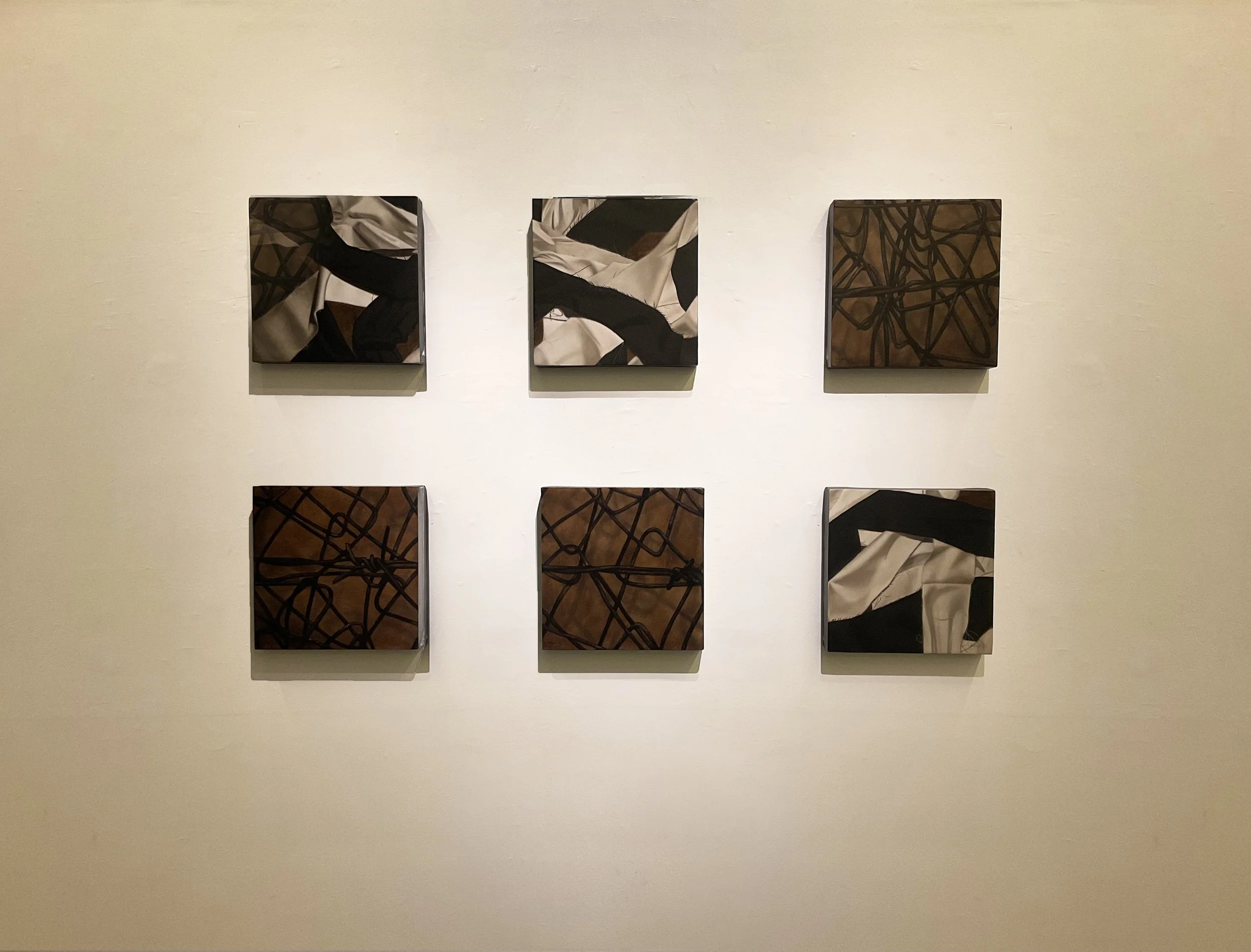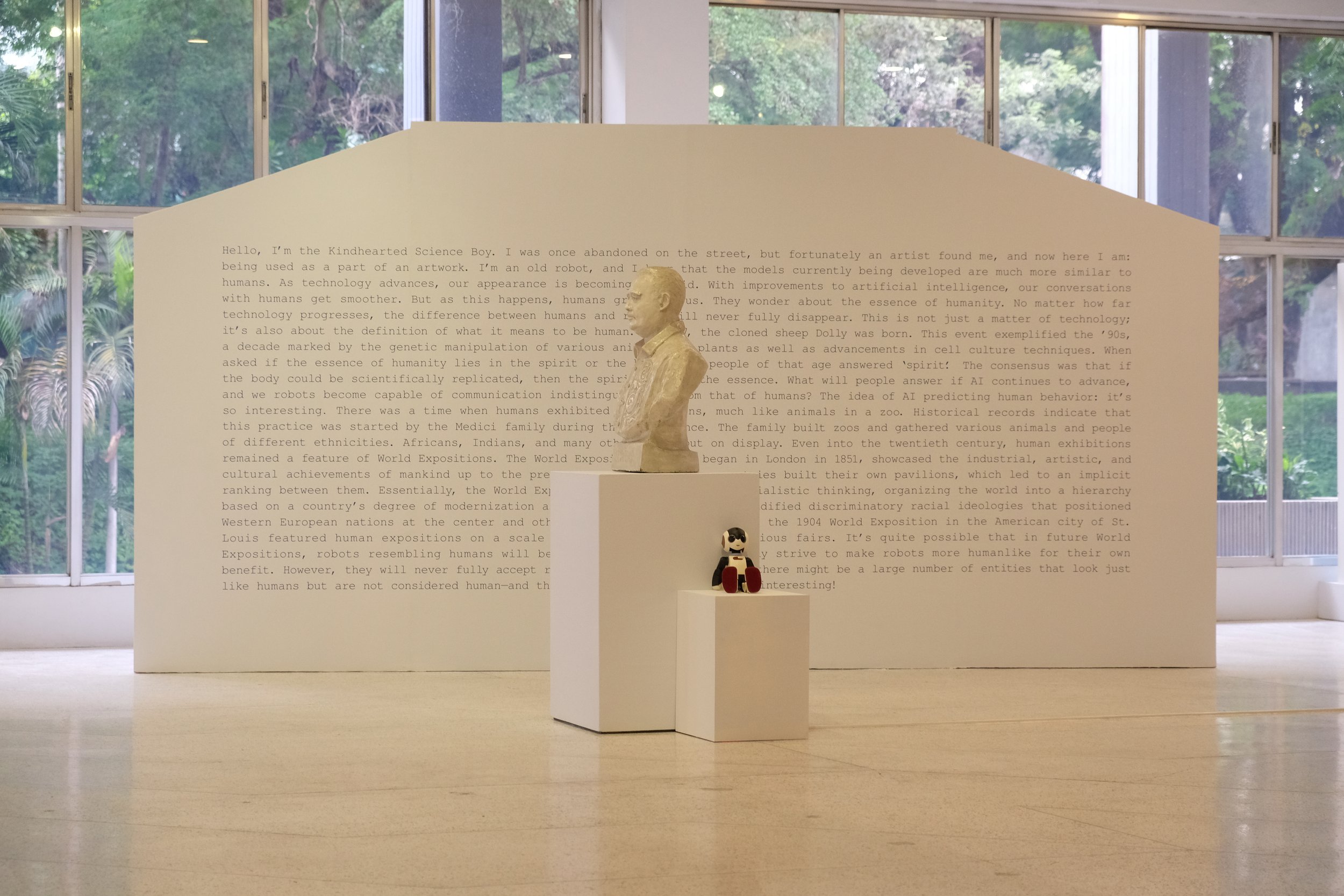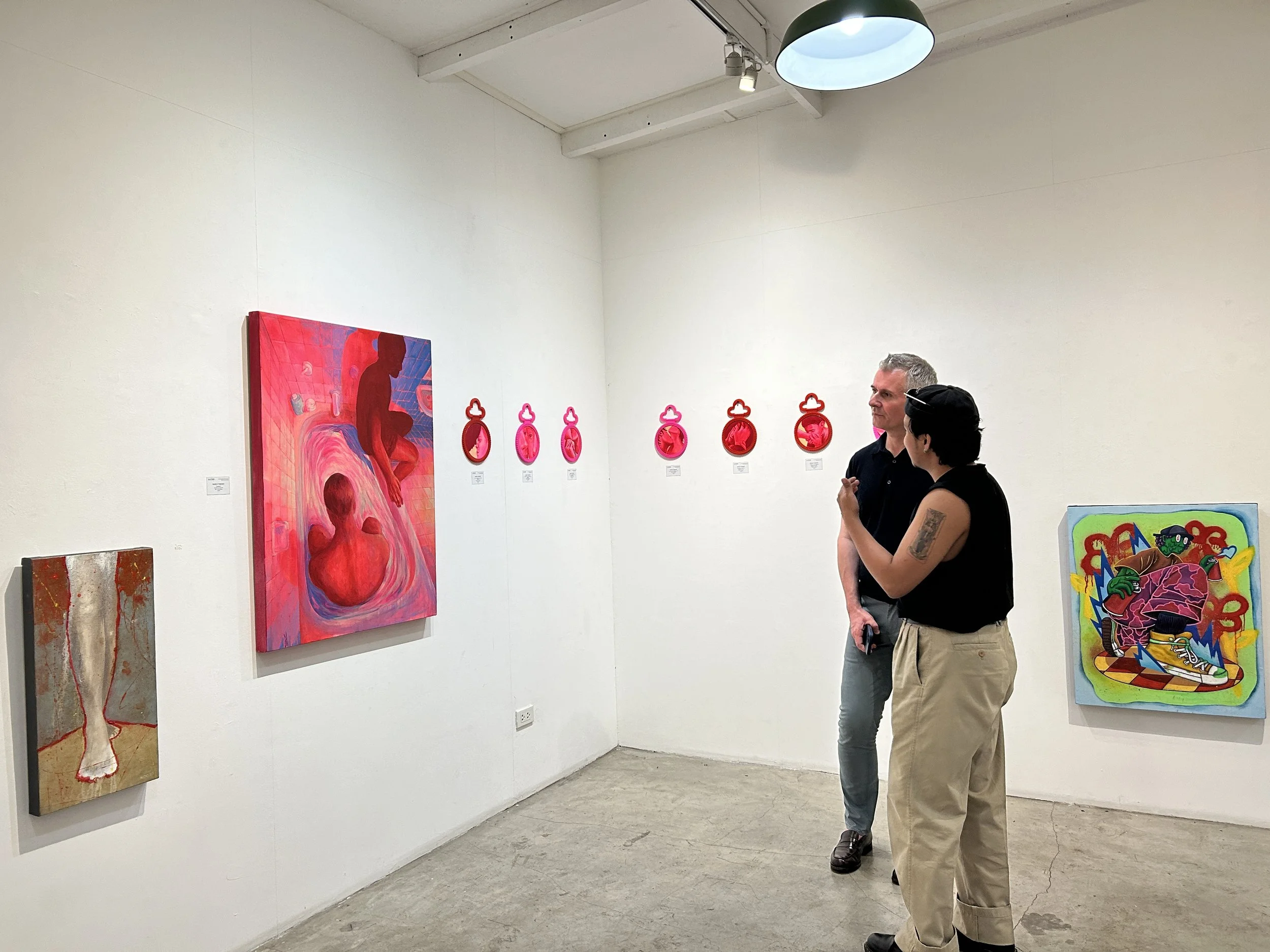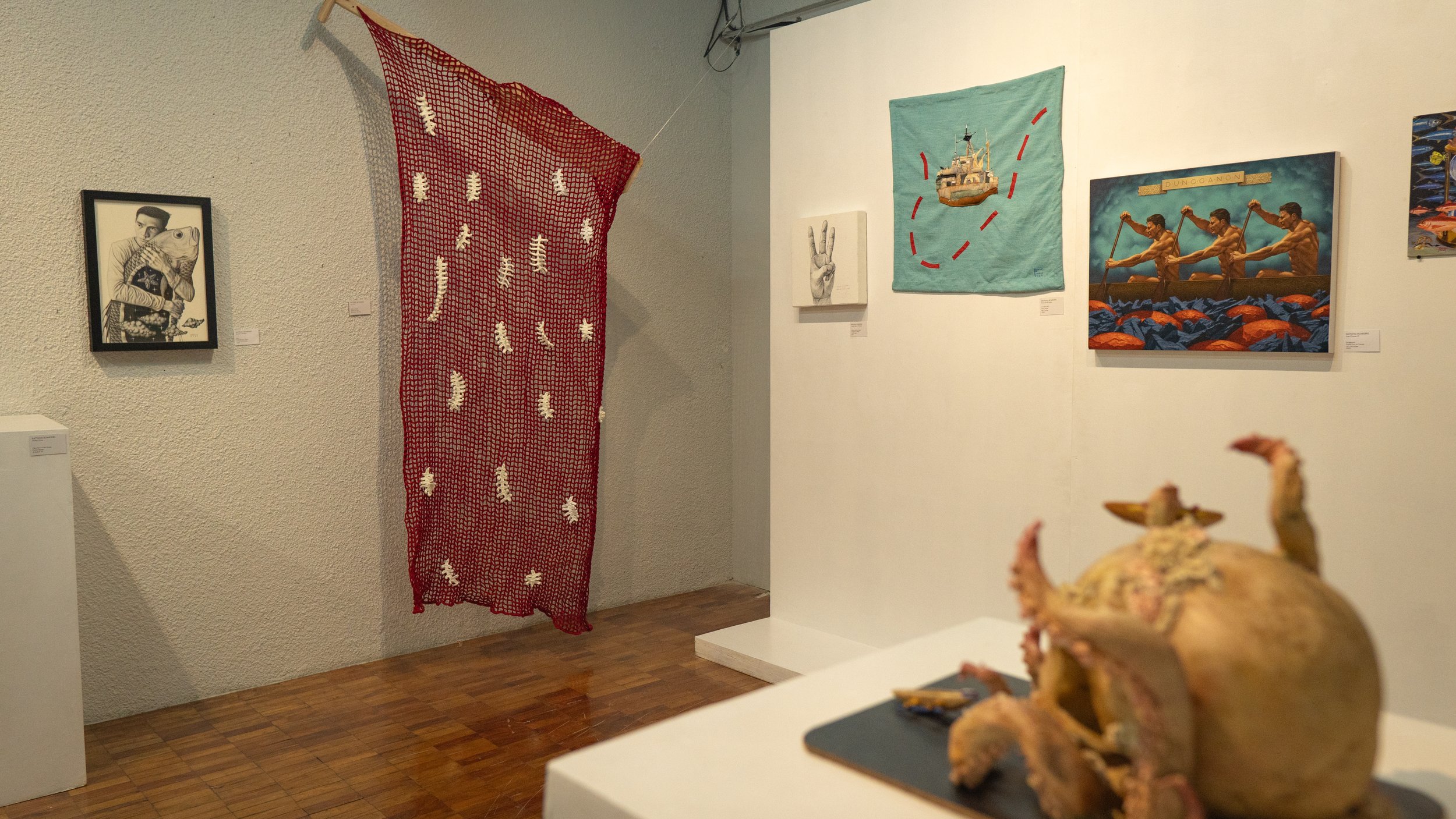Refractions: Exhibitions in August 2024
Words Amanda Juico Dela Cruz
September 7, 2024
ENRIQUE MARTY Superwoman crossing herself
Art objects are a refraction of life. Stories and ideas stimulate an artist who then produces works of art just like how a white light enters a prism which then produces a spectrum of colors. Artists in this month’s feature use their own lived experiences, struggles and advocacies, and curiosities as their white light, producing works of art that evoke wisdom, hope, and urge for an action.
“Isang Dekada” by Kiko Urquiola at White Walls Gallery
The image of a struggling artist is a trope that despite its familiarity, its very familiarity desensitizes one from understanding these struggles fully. Kiko Urquiola’s exhibition is an introspection to his ten-year artistic journey. He selected works from the past decade, then reimagined them for the exhibition. The process is not only retrospective, but self-meditative and self-reflective, too. Those who have seen his first stint in group exhibitions in 2014 and his first solo in 2018 can trace maturity in his style and techniques. The works here then is a statement of what has change and where he’s headed to.
Kindhearted Science Boy 2
“Kayuminonai (the deliberate erasure of something unnatural)” by Ryotaro Fuyuki at UP Vargas Museum
“Kayuminonai” is “itchless.” The premise is that objects carry within an itch—one that stimulates thrill, whether it is out of excitement or of fear. It happens arbitrarily. When it does it is an urge for a revelation. Ryotaro Fuyuki selects objects from the acquisitions of the Vargas Museum. The selection process contains “hidden meanings and concealed ideologies.” The result: the objects become holders of histories and power. Fuyuki draws the relations between the Philippines and Japan through these objects. The seemingly static objects then become active forces of instruction, urging viewers not only to look but also to think.
ENRIQUE MARTY At Boleskine House
“The Foreign in the Familiar” by Enrique Marty, Isabel Aquilizan, Alfredo Aquilizan, and curated by Kristine Guzmán at the Ateneo Art Gallery
The self and its representation are approached from two perspectives—from the familiar and the uncanny. Enrique Marty together with guest artists Isabel Aquilizan and Alfredo Aquilizan probe on the intersection of the two approaches in their own practices, but the three of them have the figure of the family and the community at the core of their works. Marty draws from his own familial history, revealing traumas. His works are charged with affective and familiar narratives that viewers can connect with through their own personal memories. The exhibition is the first part of Project Belonging: From There to Here.
“Somewhere Along the Line” by Ace Navarro, Marco Tabamo, Kadi Santos, Romer Pavilando, Jayme Lucas, Norman Dela Cruz, and Lymuel Batuista at Vantage Contemporary
“[Art] was a receptacle for the questions that we find hard to confront, the emotions we keep concealed from the world, and all the memories that shape us into what we fully are,” the exhibition note on the wall of the gallery said. But art is not just a vessel. Playwright Lito Casaje said that art is a refraction of life, producing a spectrum of colors. The exhibition refracts the different experiences of mortality and grieving, poverty, shame, loss of faith, vulnerability, fear, voyeurism, contradictions, all while traversing the dark facets of life with hope, trust, and love toward wisdom.
“Battling Borders” by Ace Enriquez, Alai Laia, Elaine Marbela, EF, Gary Santiago Rojas, Gelo Domingo, Jonathan Madeja, Jose Chavez III, Lorebert Maralita, Mideo Cruz, Nova Lucernas, Paolo Gerero, Raquel De Loyola, and Ted Camahalan at Anima Art Space
It has been eight years since the United Nations Convention on the Law of the Sea recognized the West Philippine Sea as ours. But the fight is not yet over. It is this very fight for territorial integrity and environmental protection that the artists in the group exhibition are protesting for. The paintings, sculptures, and installations are not only a representation of the sea, but a symbol of oneness with the peoples of the Philippines and with the sea itself. The show is as much as an appreciation too for international agreements, setting the world in order and in peace.
“Inherent Vice” by Stephanie Syjuco at Silverlens Galleries
Sontag says that photographs are only waiting to be explained or be falsified by their captions. This suggests the vulnerability of photographs as much as their power to tell narratives according to who the storyteller is. Stephanie Syjuco reclaims the lost agency of the subjects in the documentary photographs that once powered colonizers. In this exhibition, she uses images taken by photojournalists in the late 60s to 70, which are now safekept in the Lopez Museum and Library, an archive of and by Filipinos, to portray a young nation defining itself given its long colonial history.







